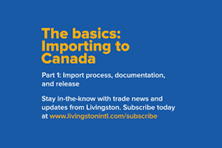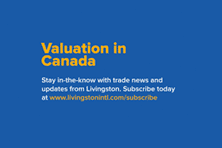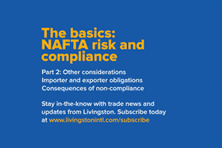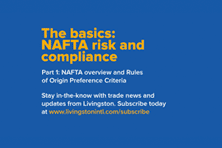Client Service Team
Your Client Service team is responsible for ensuring that you receive exceptional service at every level within our organization. You have access to dedicated Livingston resources who can respond immediately to questions you may have about your customs documentation, invoicing, duty information and more.
Your Service Coordinator
Your Service Coordinator has day-to-day knowledge of your business and instant visibility to your account history. It’s his or her job to resolve any issue or inquiry as rapidly as possible, keeping you informed through to resolution. If your Service Coordinator is not available, your call will be routed to a team member who will also be familiar with your account.
Regional Manager, Client Service
Manages critical, complex issues. Your Regional Manager, Client Service is available as an escalation resource for your Client Service Coordinator, and is able to offer additional expertise when needed.
Service Delivery Team
Your Service Delivery Team will manage your day-to-day imports relating to PARS or live freight. With this efficient team model, all classification, audit, billing and management functions are handled centrally to ensure consistent communication. The team will capture any instructions you provide as an ESP note in our system and process both electronic and manual entries 24/7/365.
Manager, Service Delivery
Responsible for the overall operational performance of the team, your Manager, Service Delivery manages resources to ensure that requirements are met. He or she will mentor and coach all team members, as well as train them on Standard Operating Procedures (SOPs) and Service Level Agreements (SLAs), and help create a superior and consistent service delivery experience.
Your Customs Specialist/Import Analyst
Your Customs Specialist/Import Analyst is responsible for working with you to manage your product database including maintenance of your suppliers, product keywords, trade agreements and tariff classification. The Customs Specialist/Import Analyst will also liaise with customs, other government departments and your carriers.
Customs Release Analyst
Processes all truck, rail, ocean, and air entries and captures event-related notes to ensure proper tracking and visibility of your shipments.




